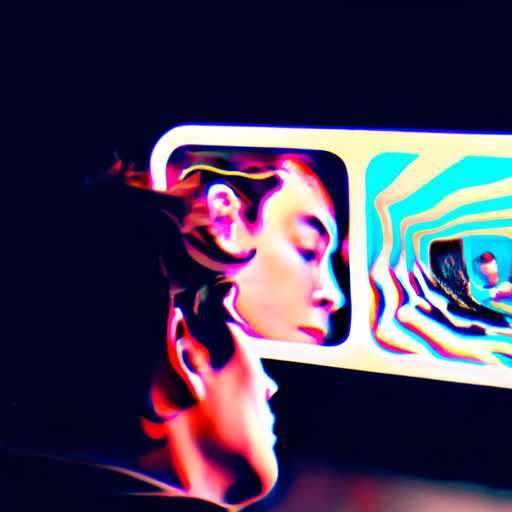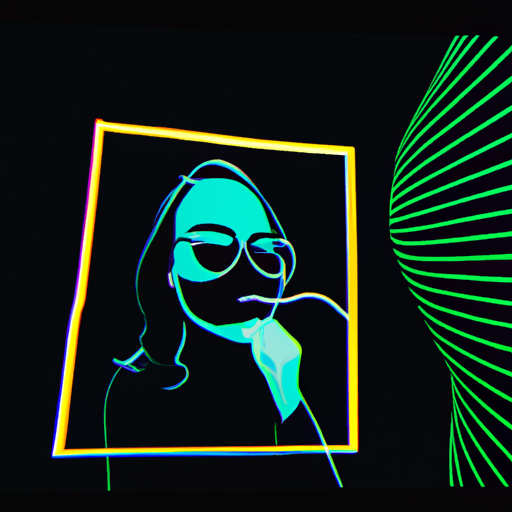
-
Table of Contents
- Dreamlike Design: Surreal Concepts in UX/UI
- What is Dreamlike Design?
- The Benefits of Dreamlike Design
- Implementing Dreamlike Design
- 1. Understand the User
- 2. Balance Realism and Surrealism
- 3. Consistency in Design Language
- 4. Use Metaphors and Symbolism
- 5. Animation and Interaction
- Case Studies: Dreamlike Design in Action
- 1. Dropbox Paper
- 2. Duolingo
- 3. Airbnb
- The Future of Dreamlike Design
- Conclusion
Dreamlike Design: Surreal Concepts in UX/UI

When it comes to user experience (UX) and user interface (UI) design, the goal is to create intuitive and visually appealing interfaces that enhance the user’s interaction with a product or service. While many designers strive for realism and familiarity in their designs, there is a growing trend towards incorporating surreal and dreamlike elements into UX/UI. This article explores the concept of dreamlike design in UX/UI, its benefits, and how it can be effectively implemented.
What is Dreamlike Design?
Dreamlike design refers to the use of surreal and imaginative elements in UX/UI to create a unique and memorable user experience. It draws inspiration from dreams, fantasies, and abstract art to challenge traditional design conventions and evoke emotions in users. By deviating from reality, dreamlike design aims to create a sense of wonder, surprise, and delight.
The Benefits of Dreamlike Design
While dreamlike design may seem unconventional, it offers several benefits that can enhance the overall user experience:
- Memorability: Dreamlike designs are often visually striking and memorable, making a lasting impression on users. By incorporating surreal elements, designers can create interfaces that stand out from the crowd and leave a lasting impact.
- Emotional Connection: Dreamlike design has the power to evoke emotions and create a deeper connection between the user and the product or service. By tapping into the user’s subconscious, designers can elicit feelings of joy, curiosity, or even nostalgia.
- Engagement: Surreal and imaginative elements can captivate users’ attention and keep them engaged with the interface. By creating an element of surprise or discovery, dreamlike design encourages users to explore and interact with the interface more actively.
- Brand Differentiation: In a crowded marketplace, standing out from competitors is crucial. Dreamlike design can help brands differentiate themselves by offering a unique and memorable user experience that aligns with their brand identity.
Implementing Dreamlike Design
While dreamlike design may seem abstract, it can be effectively implemented by following these key principles:
1. Understand the User
Before incorporating surreal elements into a design, it is essential to understand the target audience and their preferences. Conducting user research, surveys, and usability testing can provide valuable insights into what resonates with users and what may be too abstract or confusing.
2. Balance Realism and Surrealism
While dreamlike design aims to deviate from reality, it is crucial to strike a balance between surreal elements and usability. The design should still be intuitive and easy to navigate, ensuring that users can understand and interact with the interface without frustration.
3. Consistency in Design Language
Consistency is key in any design, including dreamlike design. Establishing a consistent design language, color palette, and typography can help create a cohesive and harmonious user experience. This consistency ensures that surreal elements do not feel out of place or confusing.
4. Use Metaphors and Symbolism
Metaphors and symbolism can be powerful tools in dreamlike design. By using familiar objects or symbols in unexpected ways, designers can create a sense of intrigue and encourage users to explore further. These metaphors can also help convey complex concepts or ideas more effectively.
5. Animation and Interaction
Animation and interaction play a crucial role in dreamlike design. By adding subtle animations or interactive elements, designers can bring surreal elements to life and create a more immersive user experience. These animations should be purposeful and enhance the overall usability rather than being purely decorative.
Case Studies: Dreamlike Design in Action
Several companies have successfully implemented dreamlike design principles in their UX/UI, creating unique and memorable experiences for their users. Let’s explore a few notable examples:
1. Dropbox Paper
Dropbox Paper, a collaborative document editing tool, incorporates dreamlike design elements to enhance the user experience. The interface features subtle animations, floating elements, and a whimsical color palette. These elements create a sense of playfulness and encourage users to explore the platform’s features.
2. Duolingo
Duolingo, a language-learning app, uses dreamlike design to engage and motivate users. The app features a friendly owl mascot and incorporates gamification elements to make language learning feel like a fun and immersive experience. The dreamlike elements create a sense of adventure and encourage users to continue their language-learning journey.
3. Airbnb
Airbnb, a popular online marketplace for accommodations, embraces dreamlike design to inspire users to explore new destinations. The website features stunning visuals, immersive scrolling effects, and personalized recommendations. By creating a dreamlike experience, Airbnb taps into users’ wanderlust and encourages them to book unique and memorable stays.
The Future of Dreamlike Design
As technology continues to evolve, dreamlike design is likely to become even more prevalent in UX/UI. Virtual reality (VR) and augmented reality (AR) technologies offer new possibilities for creating immersive and surreal experiences. These technologies can transport users to fantastical worlds, blurring the lines between reality and imagination.
Furthermore, as users become more accustomed to traditional design conventions, dreamlike design can provide a refreshing and unexpected experience. By challenging the status quo, designers can push the boundaries of creativity and create interfaces that truly captivate and engage users.
Conclusion
Dreamlike design in UX/UI offers a unique and memorable user experience that can enhance engagement, create emotional connections, and differentiate brands. By incorporating surreal and imaginative elements, designers can tap into users’ subconscious and evoke emotions that traditional designs may not achieve.
Implementing dreamlike design requires a deep understanding of the target audience, a balance between realism and surrealism, consistency in design language, the use of metaphors and symbolism, and purposeful animation and interaction. By following these principles, designers can create interfaces that stand out and leave a lasting impact.
As technology advances, dreamlike design is likely to evolve further, offering even more immersive and surreal experiences. By embracing this trend, designers can push the boundaries of creativity and create interfaces that truly captivate and engage users in the digital realm.
